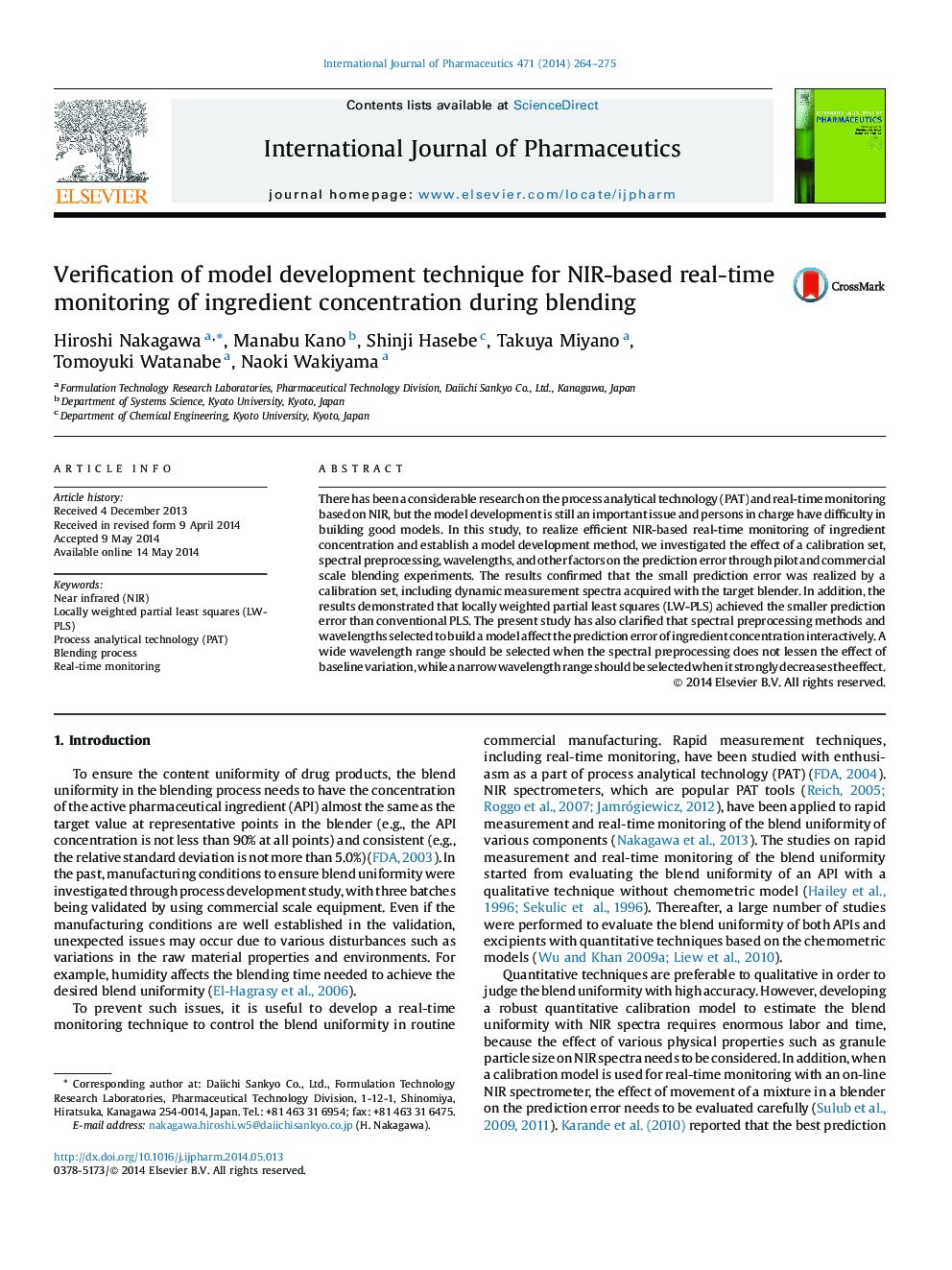| Article ID | Journal | Published Year | Pages | File Type |
|---|---|---|---|---|
| 5819317 | International Journal of Pharmaceutics | 2014 | 12 Pages |
There has been a considerable research on the process analytical technology (PAT) and real-time monitoring based on NIR, but the model development is still an important issue and persons in charge have difficulty in building good models. In this study, to realize efficient NIR-based real-time monitoring of ingredient concentration and establish a model development method, we investigated the effect of a calibration set, spectral preprocessing, wavelengths, and other factors on the prediction error through pilot and commercial scale blending experiments. The results confirmed that the small prediction error was realized by a calibration set, including dynamic measurement spectra acquired with the target blender. In addition, the results demonstrated that locally weighted partial least squares (LW-PLS) achieved the smaller prediction error than conventional PLS. The present study has also clarified that spectral preprocessing methods and wavelengths selected to build a model affect the prediction error of ingredient concentration interactively. A wide wavelength range should be selected when the spectral preprocessing does not lessen the effect of baseline variation, while a narrow wavelength range should be selected when it strongly decreases the effect.
Graphical abstractDownload high-res image (238KB)Download full-size image
